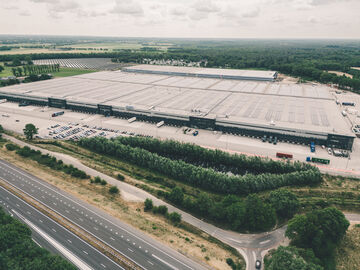WE CARE
Environmental Sustainability
As a global logistics provider, our ambition extends beyond the transportation of goods from A to B. We are committed to making a positive impact on the environment through our actions and contributing to a sustainable future.
As part of our environmental responsibility, we are already implementing environmental sustainability initiatives that cover all aspects of our company activities. From reducing greenhouse gas emissions and using energy-efficient technologies to switching to more environmentally friendly alternatives and avoiding waste, we consider our environmental impact in the supply chain. By using the latest innovations, we work together with our clients to create sustainable solutions that balance efficient processes with environmental protection.
Our environmental
sustainability goals
Purchase of 100% green electricity worldwide since January 2023
For our distribution centers, we have been purchasing 100% green electricity since the beginning of 2023 wherever we do not produce electricity for our own use with the help of photovoltaic systems.
50% reduction in greenhouse gas emissions by 2030
We are committed to reducing 50% greenhouse gas emissions from Scope 1 and Scope 2 by 2030 compared to the 2018 baseline. Similarly, we have set a target to reduce 50% of greenhouse gases from Scope 1, 2 and 3 per package by 2030.
Offsetting of unavoidable greenhouse gas emissions from 2030
From 2030 onwards, unavoidable emissions will be offset from a portfolio of voluntary climate protection projects that bind CO2 emissions from the atmosphere in the long term and thus effectively neutralize the emissions caused by us.
Our activities
We use our own solar energy at many sites, procure 100% green electricity worldwide, and continuously develop the energy efficiency of our sites. Our buildings meet high standards and are certified. We also attach great importance to transparent reporting on environmental impacts.
Arvato Climate Report
Learn more about our progress, successes and challenges in the latest Climate Report.
